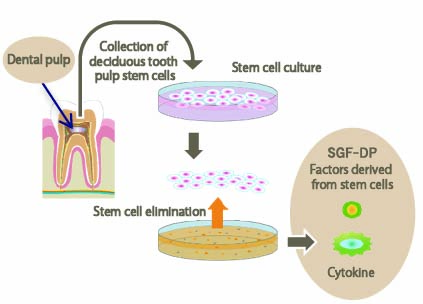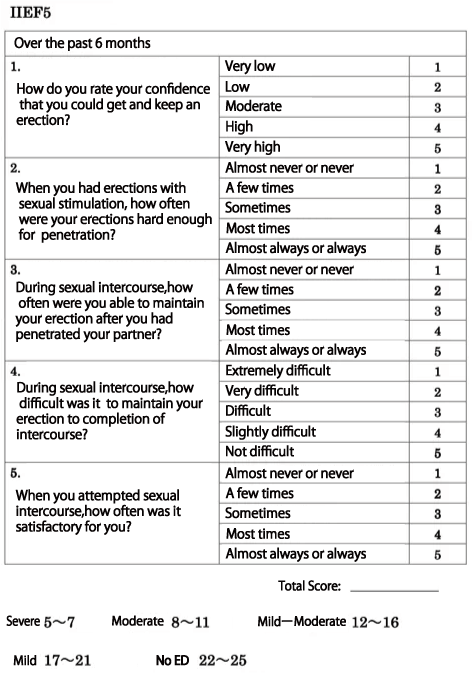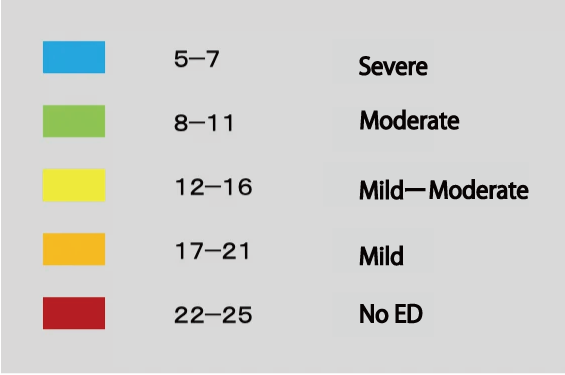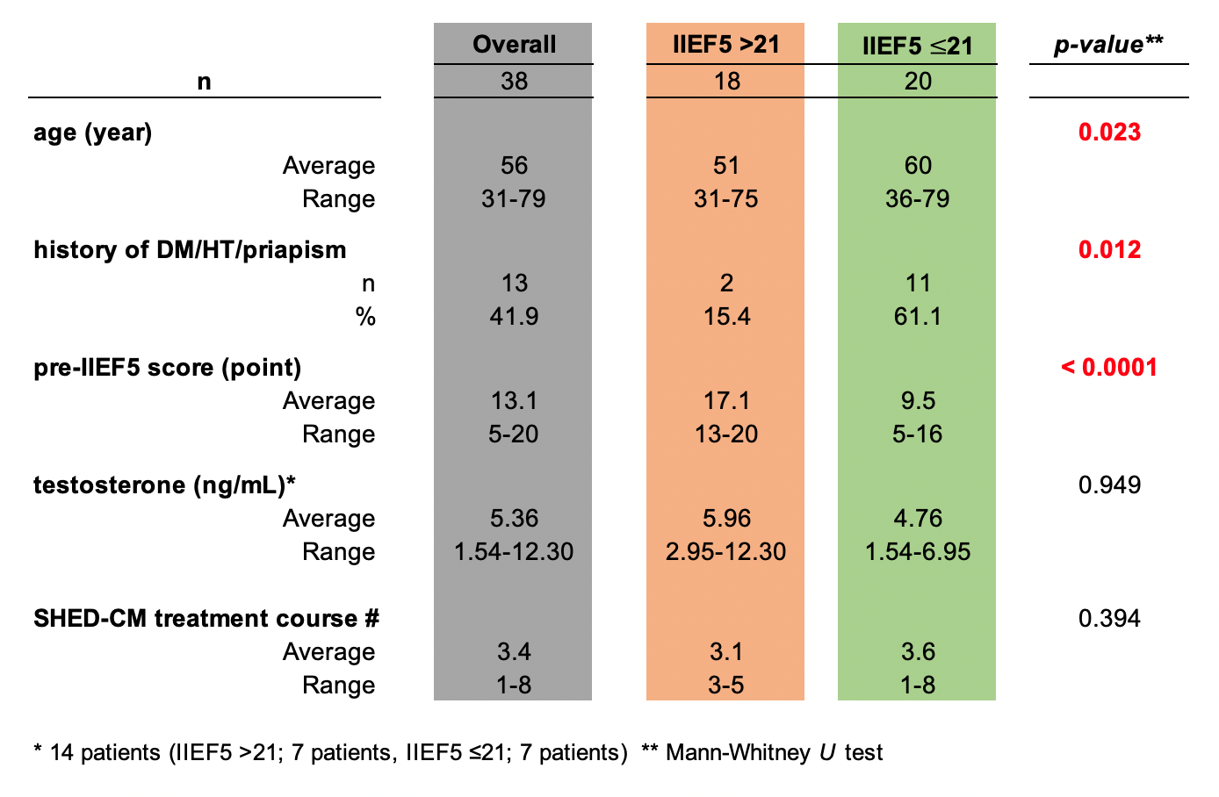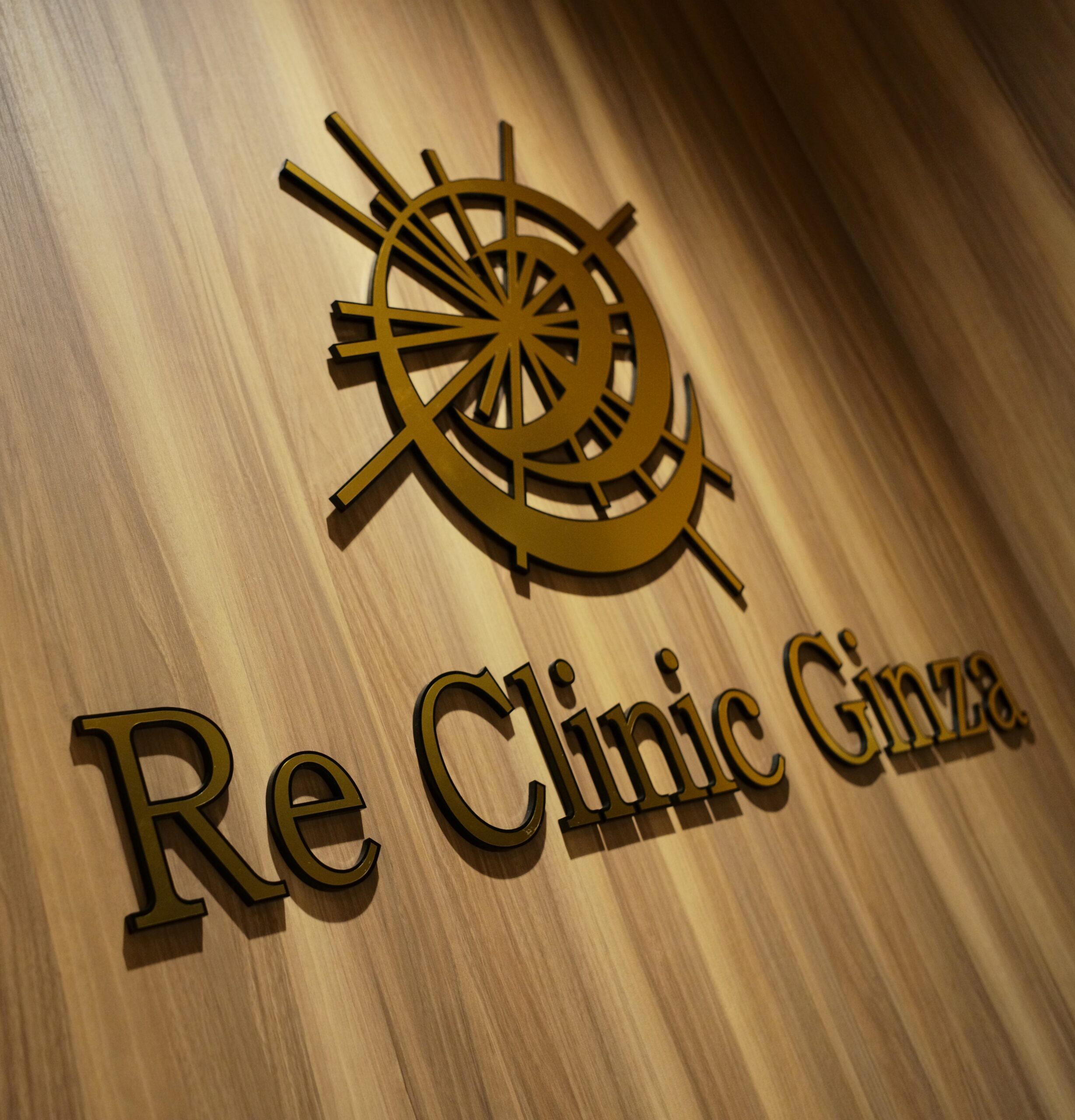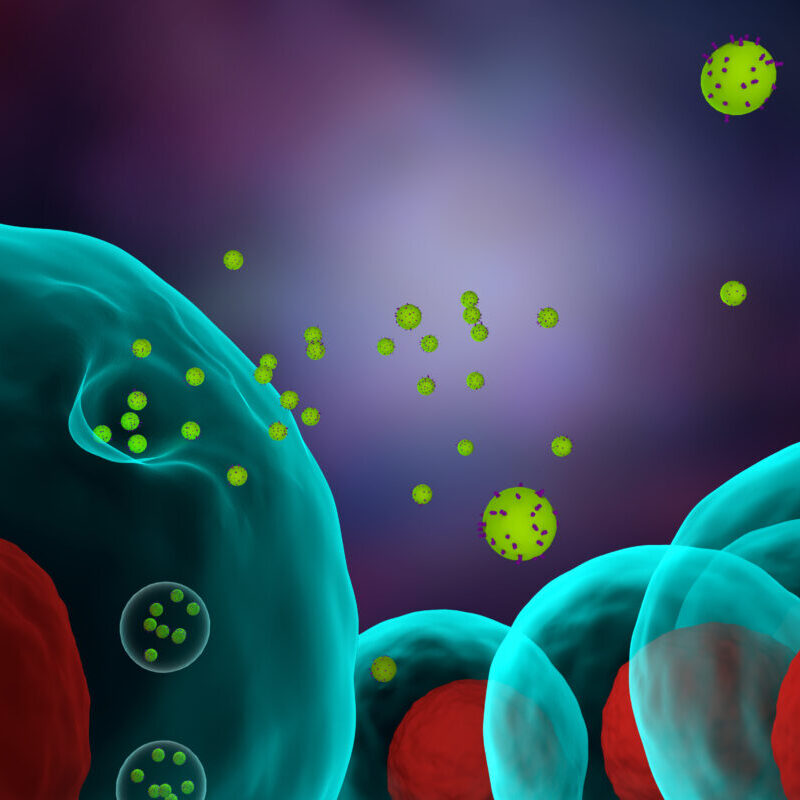What is ED (Erectile Dysfunction)?
Erectile Dysfunction (ED) is a condition characterized by the inability to achieve or maintain a satisfactory erection, leading to an inability to engage in sexual activity.
It can be broadly categorized as:
◉Psychogenic ED: ED primarily caused by psychological stress or factors.
◉Organic ED: ED resulting from medical conditions or physical trauma.
◉Mixed ED: ED characterized by a combination of psychological and organic factors.
◉Drug-Induced ED: ED triggered by the use of specific medications.
ED can be categorized into four main types, with many cases being considered mixed
For an erection to occur, it is essential for nerves and blood vessels to function normally. In a healthy state, sexual stimulation signals are transmitted from the central nervous system in the brain through the pelvic nerves to the nerves in the penile corpus cavernosum (spongy tissue of the penis). Nitric oxide (NO) is then released from the endothelial cells lining the blood vessels within the penile corpus cavernosum. This NO diffuses into the penile tissue, leading to an increase in cyclic guanosine monophosphate (cGMP) within the penile corpus cavernosum. This, in turn, causes relaxation of penile arteries and smooth muscles, allowing a significant amount of arterial blood to fill the penile tissue, resulting in an erection. This mechanism is crucial for achieving and maintaining an erection.
Of great importance in this process is nitric oxide (NO), which plays a crucial role in dilating blood vessels and enhancing blood flow. When the endothelial cells within blood vessels are damaged, they may not release an adequate amount of NO, leading to erectile dysfunction (ED).
Our clinic offers treatment using SGF to prevent and improve ED. SGF works by repairing damaged endothelial cells in blood vessels, thus promoting the restoration of vascular function. The effectiveness of ED treatment and screening is often measured using the International Index of Erectile Function (IIEF-5). In our clinic, with a sample of 38 cases, IIEF-5 scores significantly improved after three rounds of SGF administration. In 18 of these cases, the treatment resulted in “no ED.”
Erectile Dysfunction (ED) Treatment Gaining Worldwide Attention
Stem cells are cells found in the human body that serve as the building blocks for various tissues and organs, including bones, blood, and muscles. They possess the ability to differentiate into all types of cells.
The use of these cells’ capabilities in the field of “regenerative medicine” has been gaining significant attention in recent years. This approach aims to regenerate and repair injured or damaged tissues, not only for traditional disease treatments but also for potential applications in the treatment of erectile dysfunction (ED).
Stem cell therapy has garnered even more global attention, particularly following the Nobel Prize awarded to Professor Shinya Yamanaka of Kyoto University for his groundbreaking work in this area. Research into applying stem cell therapy to ED treatment is underway in various countries, including the United States.
ED Treatment with SGF
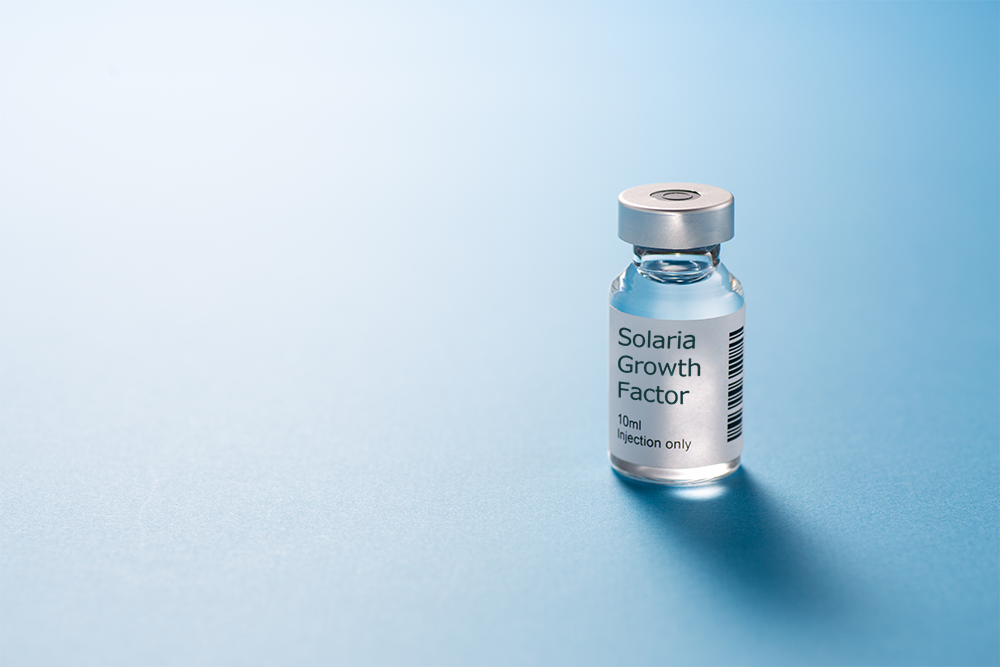
At the RL Clinic, we offer ED treatment using SGF (Supernatant of Dental Pulp Stem Cell Culture).
We administer injections once a week for four weeks, which helps repair endothelial cell function and promotes vascular dilation to restore erectile function.
The sustainability of the effects also sets it apart from traditional Viagra, as it is not a temporary solution. After completing one cycle of four injections, the effects can last for over a year, as it improves from within endothelial cells.
Furthermore, traditional treatment medications raise concerns about potential heart strain and side effects like headaches and dizziness, while stem cell therapy carries a lower risk of adverse effects, allowing for a safer and more reassuring treatment experience.
In the future, there is also hope for insurance coverage, and SGF-based stem cell therapy is expected to garner even more attention.
Procedure Flow
SGF Treatment: Once a week for 4 weeks (4 sessions)
In the treatment of ED, a small hairband is placed at the base of the penis, and a total of 2cc of clear liquid is injected, 1cc on each side of the penile corpora cavernosa. The injections are administered with ultra-fine needles, so there is very little discomfort, unlike regular injections.
Presentation at the 20th Annual Meeting of the Japanese Society for Regenerative Medicine – Treatment of Erectile Dysfunction with Deciduous Tooth Pulp Stem Cell Culture Supernatant
Presenters: Shoji Koga, Ginza Solaria Clinic
Hiroshi Horiguchi, Department of Urology, Edogawa Hospital
Title: Treatment of Erectile Dysfunction with Deciduous Tooth Pulp Stem Cell Culture Supernatan
Institutions: Ginza Solaria Clinic, Department of Urology, Edogawa Hospital
Presenter: Shoji Koga
The primary presenter has no conflicts of interest to disclose regarding this presentation for the past year (January to December).
Background
・In Japan, it is estimated that one in three men aged 40 and older suffers from Erectile Dysfunction (ED), but the available treatments are primarily symptomatic, and there is no established fundamental treatment method. (Urology 2003;61:201-206)
・Intermediate results have been reported for seven ED patients with type 2 diabetes who achieved improved erectile function through penile corpus cavernosum transplantation of umbilical cord blood stem cells. (Exp Clin Transplant 2010;8:150-160)
(Exp Clin Transplant 2010;8:150-160 )
Objective
We investigated the potential of Erectile Dysfunction (ED) treatment using conditioned media of human exfoliated deciduous dental pulp stem cells (SHED-CM) generated during the cultivation of deciduous tooth pulp stem cells.
Methods
- Over a period of 4 years and 6 months, from April 2016 to October 2020, direct injections of SHED-CM were administered to the penile corpus cavernosum of 38 ED patients who visited our clinic.
- During the course of this treatment, phosphodiesterase type 5 inhibitors for ED or testosterone replacement therapy for late-onset hypogonadism were not used concurrently.
Adjustment of SHED-CM
1.Cultivate dental pulp-derived cells from exfoliated deciduous teeth at a concentration of 1 x 10^7.
2.Remove serum-containing culture medium and replace it with serum-free culture medium.
3.After 48 hours, collect the culture supernatant, filter out cellular components, and confirm cell removal under a microscope.
4.Perform endotoxin tests and culture examinations.
Methods
- For the assessment of effectiveness, we utilized the International Index of Erectile Function (IIEF-5) questionnaire, which is commonly used for screening and evaluating the effectiveness of ED treatments.
Case (Age)
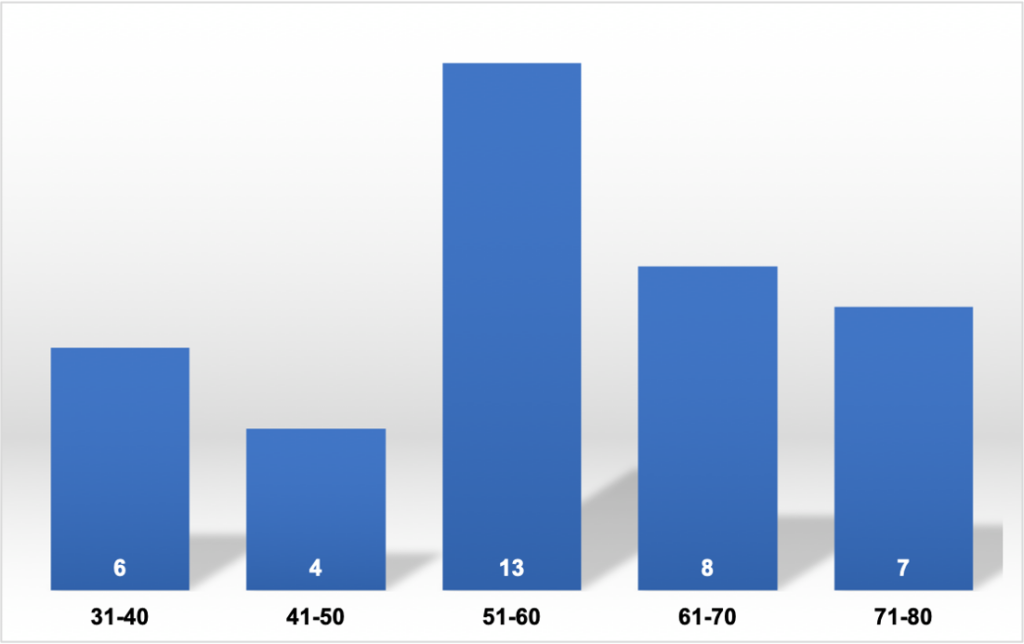
Case (Before Treatment)
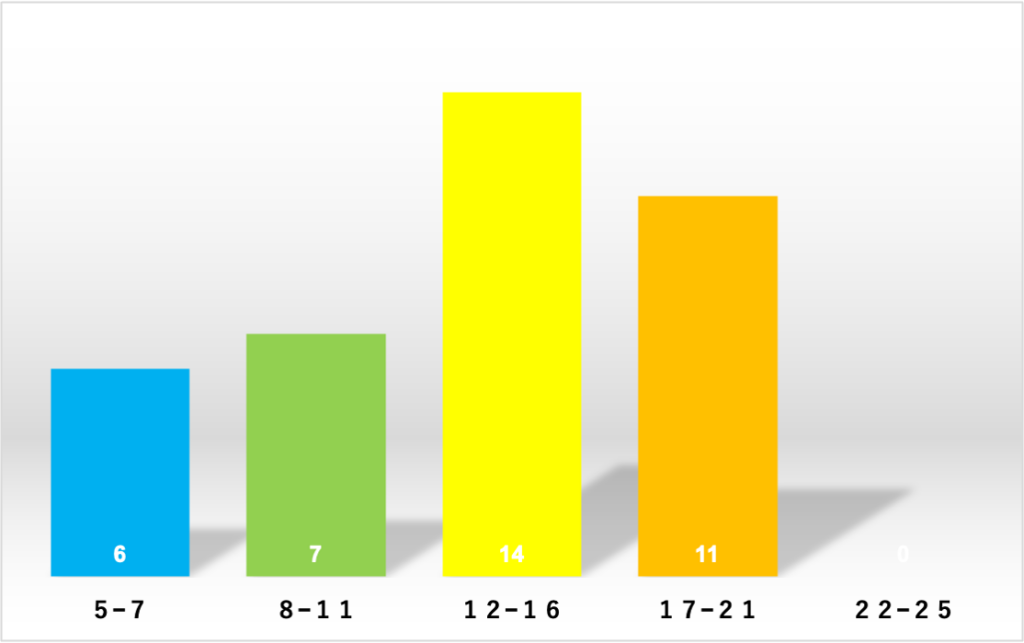
Case(Medical History and Comorbidities)
Type 2 Diabetes: 7 cases
Hypertension: 7 cases
Shunt surgery for priapism (6 months ago): 1 case
Results
An improvement in the average IIEF-5 score of 6.2 points (2-13) was observed after three administrations.
Significant Improvement in IIEF-5
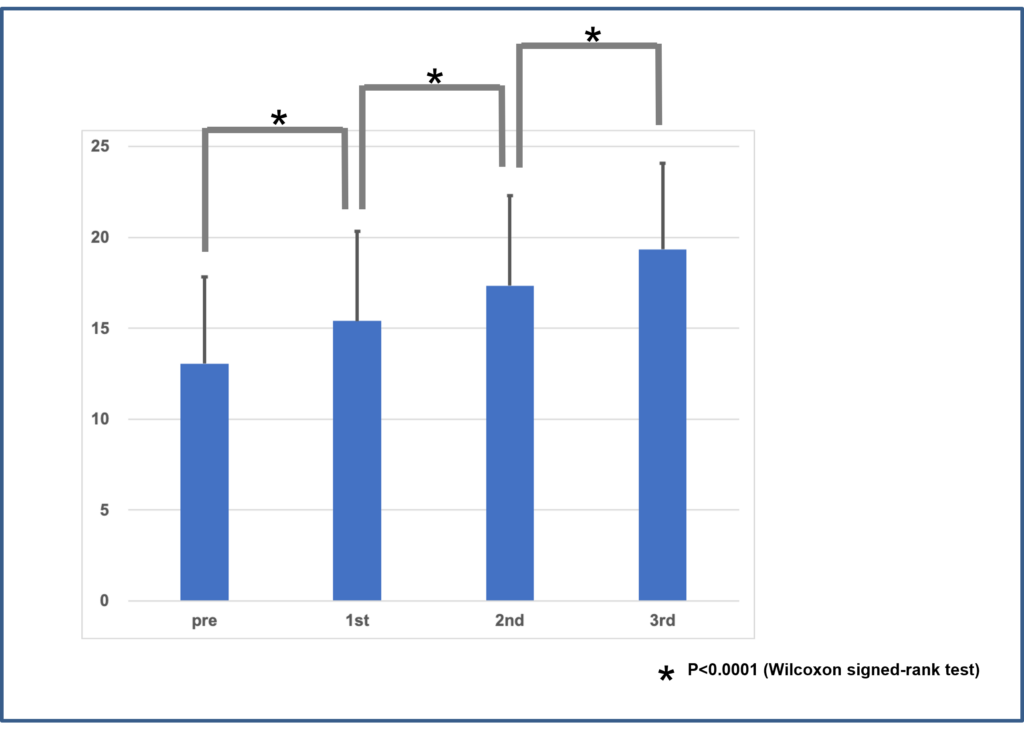
Age Group-Specific IIEF-5
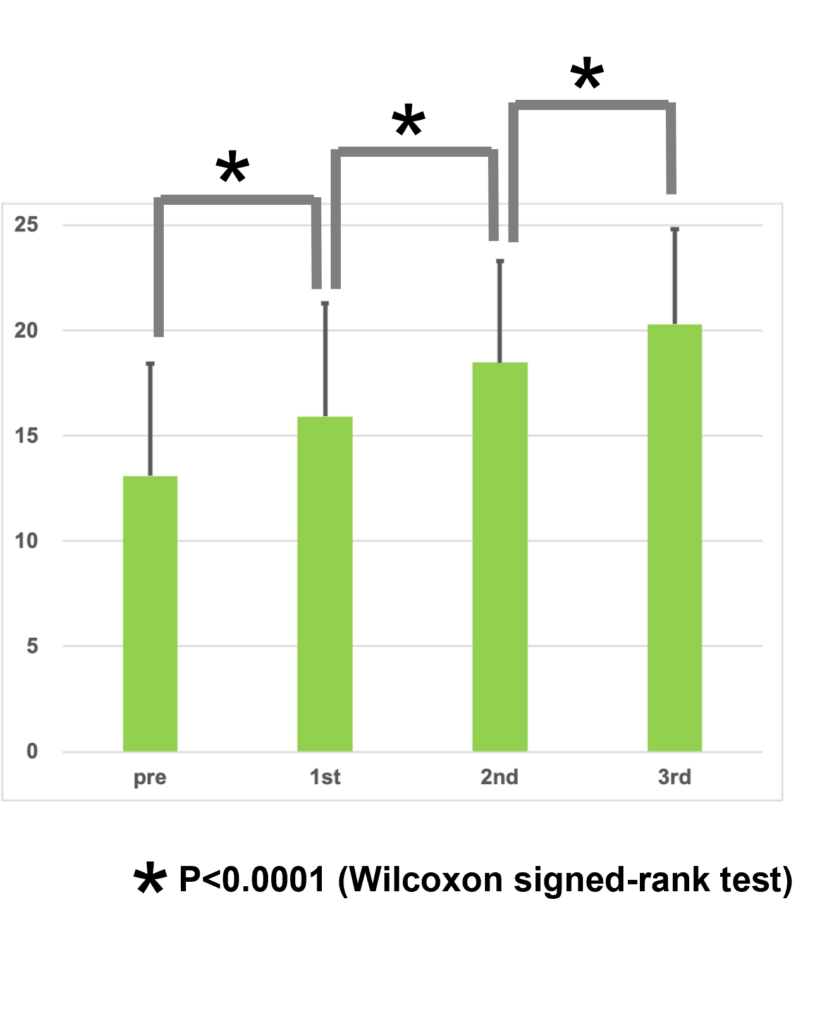
Age < 60
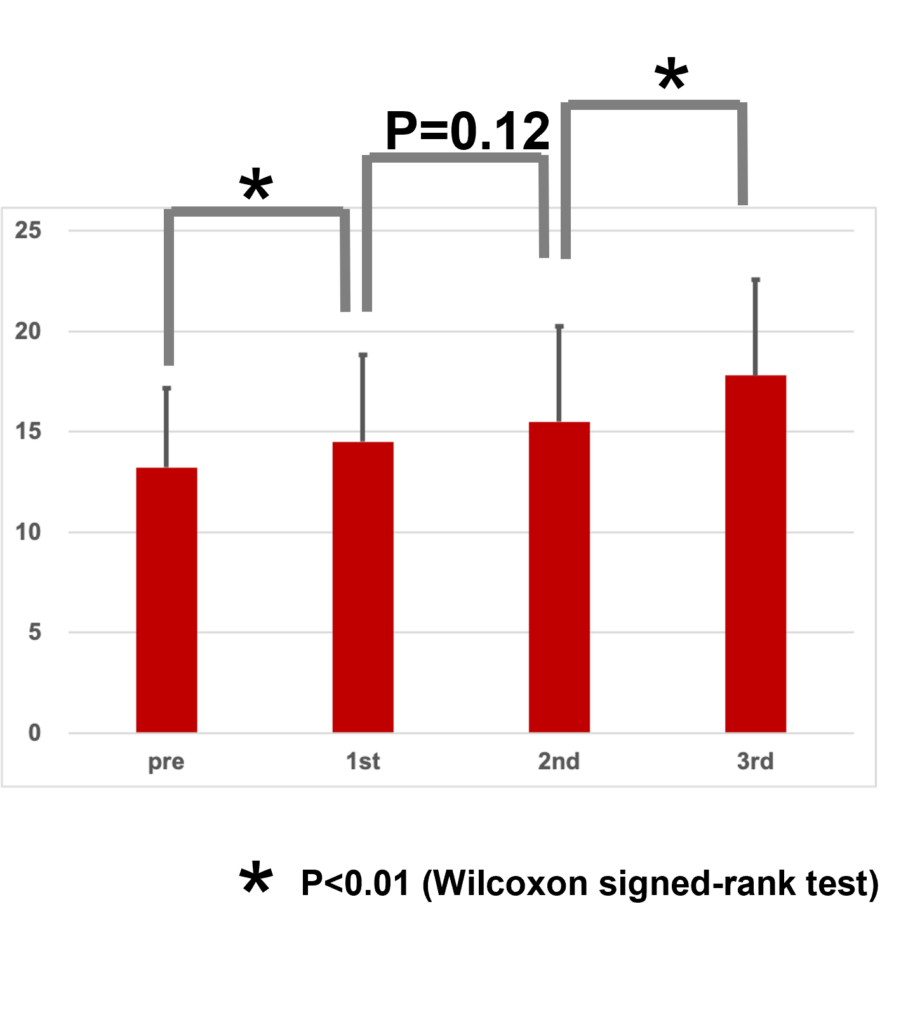
Age ≥ 60
Predictive Factors for “No ED” Treatment Effect Before Treatment
Summary
・The therapeutic effects of penile corpus cavernosum injection of SHED-CM were examined in 38 cases of ED patients.
・A total of three administrations of SHED-CM resulted in a significant improvement in IIEF-5 scores, with a “no ED” treatment effect achieved in 18 cases (47.4%).
・Improvement in IIEF-5 scores was observed across all age groups.
・Predictive factors for achieving a “no ED” treatment effect included age, IIEF-5 score, and the presence of a medical history.
Closing Remarks
In conclusion, the results of this study suggest the potential for SHED-CM treatment as a fundamental therapy for ED by improving vascular dysfunction, which accounts for 70% of the etiology of ED.

